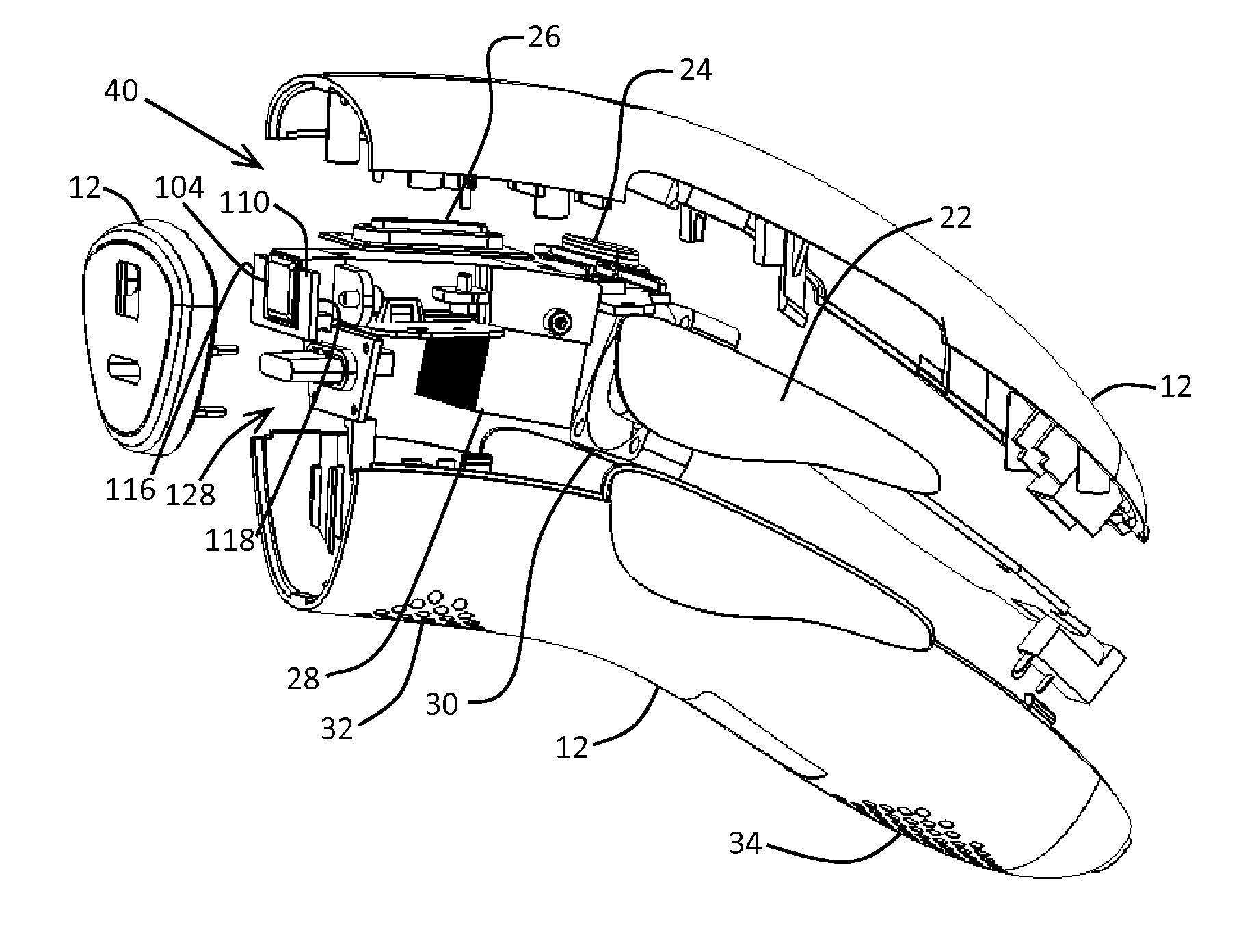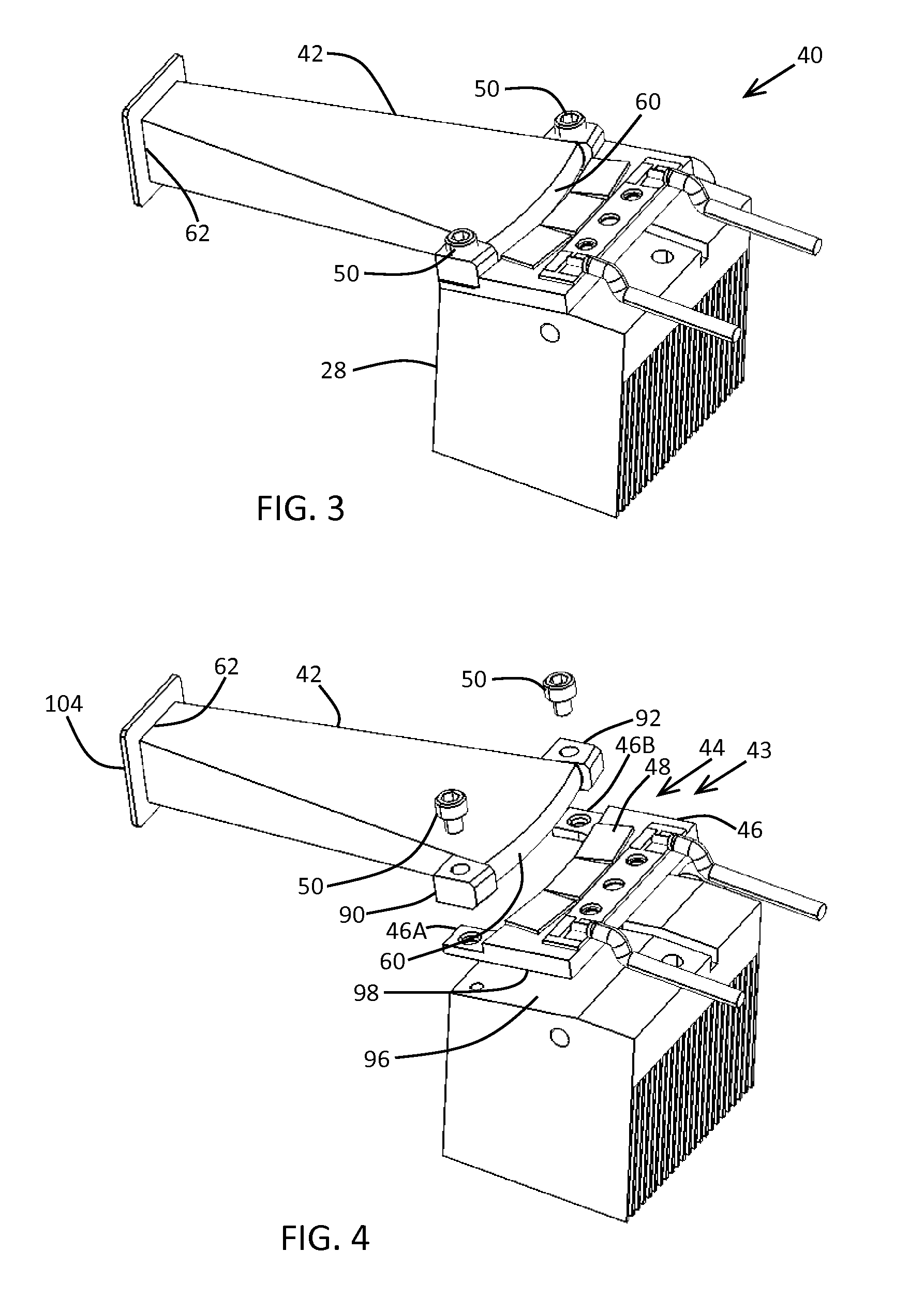Skin color and capacitive sensor systems
a capacitive sensor and skin color technology, applied in the field of sensor systems, can solve the problems of potentially unsafe laser hair removal for different skin tones, monochromatic limitations of beams, etc., and achieve the effects of less waste heat, less power, and less waste hea
- Summary
- Abstract
- Description
- Claims
- Application Information
AI Technical Summary
Benefits of technology
Problems solved by technology
Method used
Image
Examples
Embodiment Construction
[0026]In General
[0027]Referring now to FIGS. 1 and 2, a hair removal device 10 is shown that is sufficiently compact and lightweight so that it may be held in one hand by a user. The device 10 has a housing 12 that includes an arcuate-shaped middle section 14 extending between opposite front and rear ends 16, 18, allowing for a comfortable and ergonomic grip by a user. The user positions the front end 16 of the device 10 towards a location on the body for application of radiative energy towards the epidermis such as for the removal of unwanted hair. Other embodiments of the device 10 may be used for other applications, such as for the removal of skin blemishes.
[0028]The rear end 18 receives electrical energy for powering the device via a cable 20 attached to a suitable external power supply (not shown). The aspect ratio of the housing 12 between the arcuate-shaped middle section 14 and the front and rear ends 14, 16 is large, thereby enabling the user of the device 10 to access hard...
PUM
| Property | Measurement | Unit |
|---|---|---|
| power | aaaaa | aaaaa |
| wavelengths | aaaaa | aaaaa |
| height | aaaaa | aaaaa |
Abstract
Description
Claims
Application Information
 Login to View More
Login to View More - R&D
- Intellectual Property
- Life Sciences
- Materials
- Tech Scout
- Unparalleled Data Quality
- Higher Quality Content
- 60% Fewer Hallucinations
Browse by: Latest US Patents, China's latest patents, Technical Efficacy Thesaurus, Application Domain, Technology Topic, Popular Technical Reports.
© 2025 PatSnap. All rights reserved.Legal|Privacy policy|Modern Slavery Act Transparency Statement|Sitemap|About US| Contact US: help@patsnap.com



